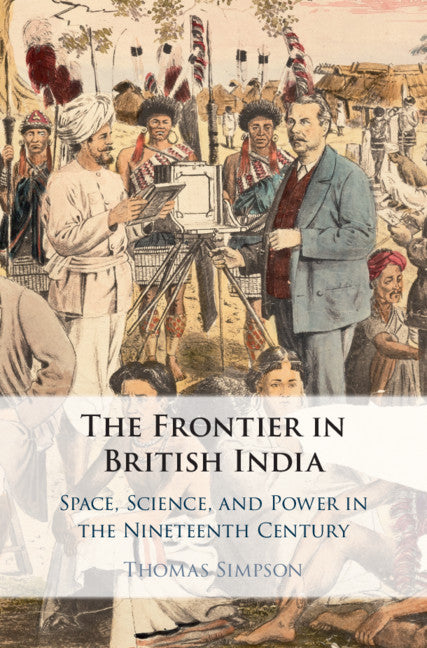Freshly Printed - allow 8 days lead
Couldn't load pickup availability
The Frontier in British India
Space, Science, and Power in the Nineteenth Century
An innovative account of how distinctive forms of colonial power and knowledge developed at the territorial fringes of colonial India.
Thomas Simpson (Author)
9781108840194, Cambridge University Press
Hardback, published 7 January 2021
350 pages
15.5 x 23.5 x 2 cm, 0.59 kg
'… a fascinating insight into the dynamic processes that were at work in the eastern and western reaches of the British Indian Empire throughout its expansionary phase in the nineteenth century. This book is an important contribution to the scientific study of frontiers and the edges of sovereign administrative spaces.' Deepak Bhattasali, The Portolan
Thomas Simpson provides an innovative account of how distinctive forms of colonial power and knowledge developed at the territorial fringes of colonial India during the nineteenth century. Through critical interventions in a wide range of theoretical and historiographical fields, he speaks to historians of empire and science, anthropologists, and geographers alike. The Frontier in British India provides the first connected and comparative analysis of frontiers in northwest and northeast India and draws on visual and written materials from an array of archives across the subcontinent and the UK. Colonial interventions in frontier spaces and populations were, it shows, enormously destructive but also prone to confusion and failure on their own terms. British frontier administrators did not merely suffer 'turbulent' frontiers, but actively worked to generate and uphold these regions as spaces of governmental and scientific exception. Accordingly, India's frontiers became crucial spaces of imperial practice and imagination throughout the nineteenth century.
Introduction
1. Borders
1.1 'Rude and complicated': the posa boundary in northern Assam
1.2 'Making outside barbarians': the administrative border in early colonial Punjab
1.3 'Absurd and impossible': bordering the Naga Hills District, 1866–1905
1.4 'Breaking the border rule': Balochistan's boundaries, 1866–1892
1.5 'Substantial pillars': marking the boundary in northern Assam during the 1870s
1.6 'A line shifting': borders in the Chin-Lushai Hills, 1869–1900
1.7 'As if our territory': British India's international boundaries at the turn of the twentieth century
1.8 Conclusion: limits of the colonial state
2. Surveys and maps
2.1 'Getting at the truth': route surveys at nascent frontiers
2.2 'Impossible to level': frontiers and the problem of altitude in the 1850s
2.3 'Rough accurate maps': frontier representations as material objects
2.4 Sites for 'sore-eyes': surveying in frontier regions from the later 1860s
2.5 'A higher land': theorising the unknowable frontier
2.6 Conclusion: 'Clean out of the map'
3. Ethnography
3.1 'Entirely distinct from the ordinary population': ethnographic encounters during the 1810s
3.2 'Raising, not solving, doubts': the advent of Assam's 'mountain tribes', 1820s–1840s
3.3 'Aboriginal remnants': ethnography in the time of war and annexation at the Sind and Punjab frontiers, 1830s–1850s
3.4 'Patient, painstaking care': fragmented ethnography in northeast India during the 1870s
3.5 'Insufficient intimacy and confidence': photographing 'frontier tribes' in the later nineteenth century
3.6 'Purely tribal': frontiers and anthropology at the turn of the twentieth century
3.7 Conclusion: productive problems
4. Violence
4.1 'Terrible to behold': violence on the Upper Sind frontier, 1839–1848
4.2 'Often repeated outrage': state violence and the Nagas, 1838–1900
4.3 'Few permanent results': military expeditions on the Punjab frontier, 1849–1901
4.4 Conclusion: 'Exterminate all the brutes'
5. Administration
5.1 'Strangers and exiles': tribal colonies on the Upper Sind Frontier
5.2 'Made very useful': relocating communities in northeastern Assam
5.3 'Doing nothing but write-write-write': irregular administration at the northeast frontier
5.4 'A rough half-subdued country': administering Balochistan, 1877–1900
5.5 Conclusion: Fashioning fractals
Conclusion: the significance of the frontier in British India.
Subject Areas: History of science [PDX], Colonialism & imperialism [HBTQ], Modern history to 20th century: c 1700 to c 1900 [HBLL], Asian history [HBJF]


